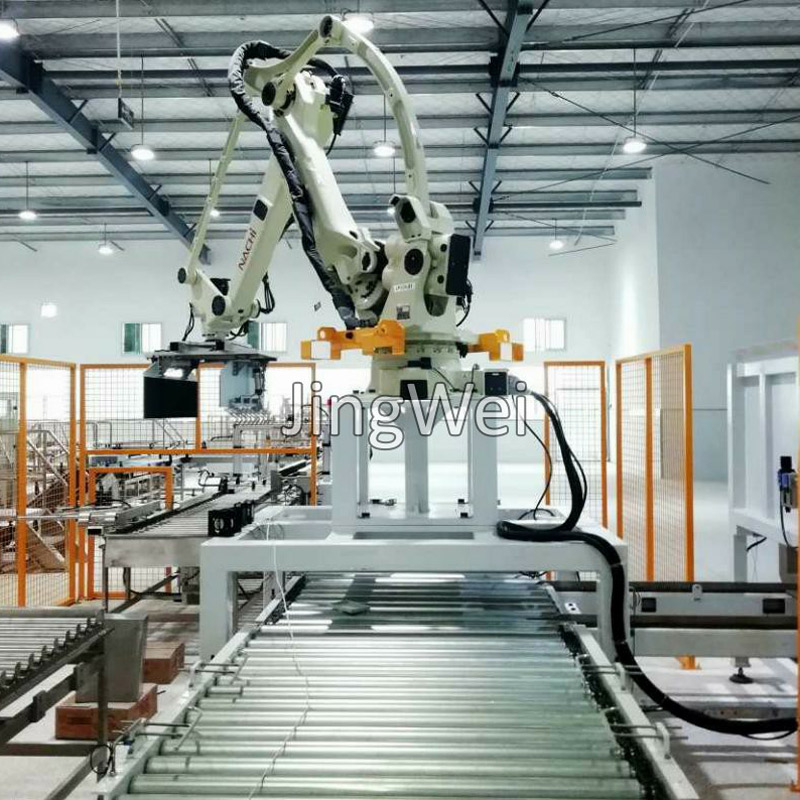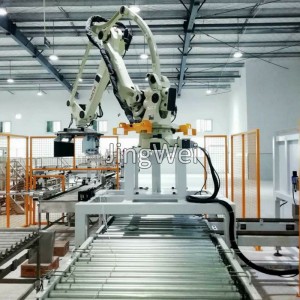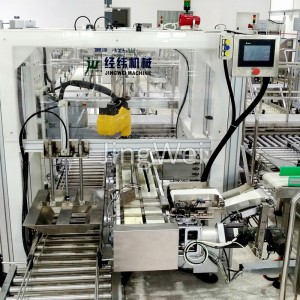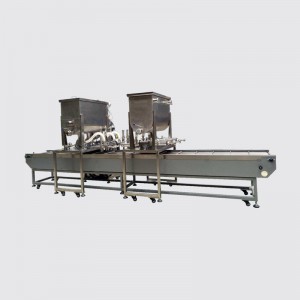Palletizing
The system typically consists of a robot or a group of robots, conveyors, pallets, and a control system.
The following are the common types of palletizing systems:
Robotic palletizing systems: These systems use robotic arms to pick and place products onto the pallet in a specific pattern. They are versatile and can handle a wide range of products with various sizes, shapes, and weights. Robotic palletizing systems can be programmed to handle different pallet configurations and can be easily reconfigured for different packaging types or product lines.
Layer palletizing systems: Layer palletizers are designed to stack entire layers of products onto pallets. The layers are usually pre-configured to a specific pattern, and the machine picks up and places the entire layer onto the pallet in one motion. Layer palletizing systems are typically used for products with uniform sizes and shapes, such as boxes or bags.
Hybrid palletizing systems: Hybrid systems combine the benefits of robotic and layer palletizing systems. They use a combination of robotic arms and mechanical devices to pick and place products in layers onto pallets. Hybrid systems can handle a wide range of product sizes and configurations and can achieve higher speeds and accuracy than conventional layer palletizing systems.
Features
1. To provide the pallet automatic from pallet storage then to improve the production efficiency and reduce the product cost. It can replace the manual and traditional palatalizing completely.
2. Less area occupancy, reliable performance, simply operation. It is widely used in beverage, food, chemical industry, medicine, auto parts and other industries.
3. Strong flexibility, large load range, easy to change and strong compatibility. It can meet the multi lines palletizing simultaneously.
4. Customized development and meeting the customer needs innovation.






